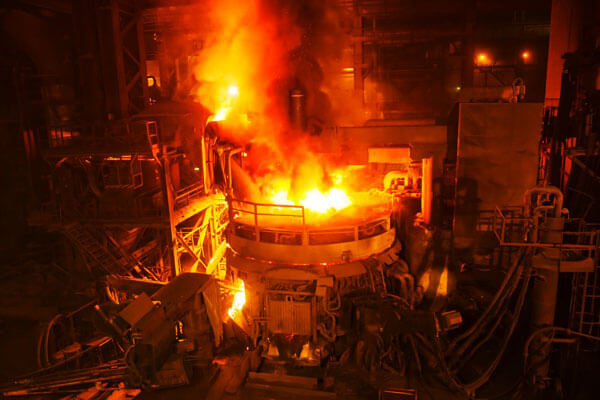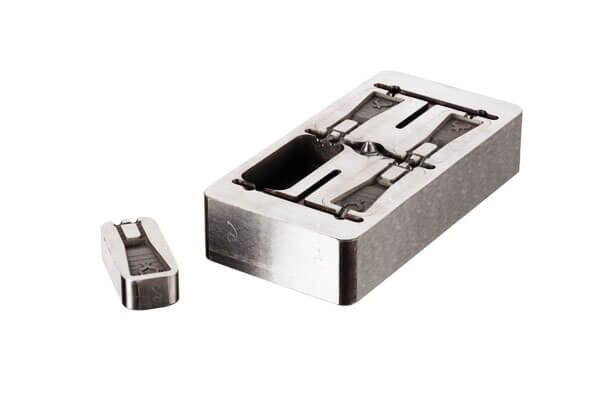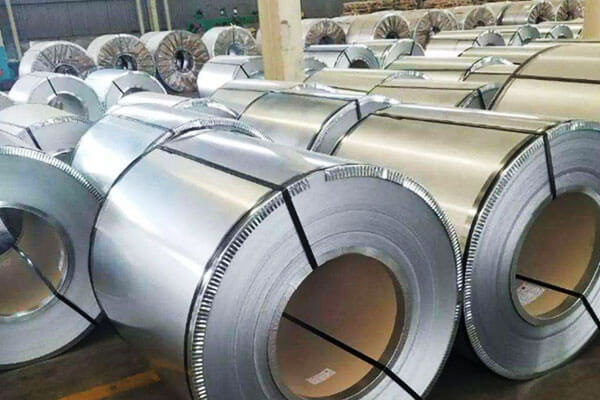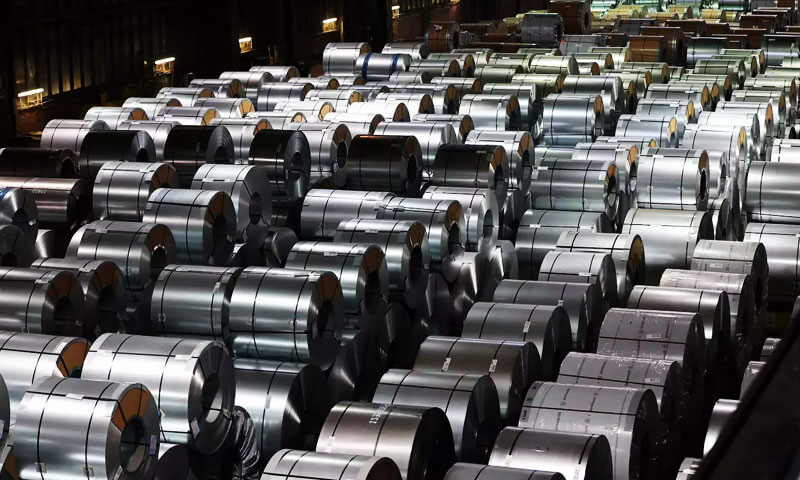介绍
在 1889, 在巴黎世界博览会, 高耸的钢结构震惊了世界 - 埃菲尔铁塔.
由 18,038 锻铁组件, 这一工程奇迹不仅象征着结构创新的巅峰,也标志着人类正式进入钢铁时代.
从摩天大楼的框架到医疗设备的复杂组件, 钢铁以其不可替代的作用渗透到现代文明的方方面面.
超越塑造工业发展, 它一直是全球基础设施扩张和技术进步的驱动力.
本文深入探讨了钢铁的科学本质, 其制造技术, 产业演变, 和未来趋势,
揭示这种重要材料如何继续定义人类文明的边界.
1. 钢铁的历史回顾
人类对钢铁的探索可以追溯到 1800 公元前安纳托利亚, 但真正的工业革命始于19世纪.
在 1856, 亨利·贝塞默 发明了 贝塞麦转换器, 提高了钢铁生产效率 二十倍,
直接促进铁路快速发展, 造船, 和机械工程.
到了20世纪, 的广泛采用 连续铸造技术 生产效率进一步提高, 减少材料废物, 并提高产品质量.
在21世纪, 全球钢铁行业已发生重大转型.
中国已成为主导力量, 会计 53.9% 占全球粗钢产量的 2023.
同时, 日益严格的环境法规和碳中和目标正在推动行业走向低碳和智能制造.
回顾钢铁的发展历史,每一次技术突破都极大地拓展了其应用领域,
让钢材超越传统建筑领域进入航空航天领域, 医疗器械, 和可再生能源部门.
2. 钢铁制造工艺
现代钢铁生产是一个高度复杂的工业体系,融合了材料科学, 工程精度, 和环境可持续性.
其核心阶段包括原材料选择, 冶炼, 精制, 和塑造, 以及可持续和循环经济实践.
原料 & 萃取
铁矿石质量, 炼焦煤, 合金元素决定钢的最终性能.
例如, 高纯度 铁矿 具有高 铁含量 显着减少杂质, 提高机械强度和耐腐蚀性.
截至 2024, 全球铁矿石产量已达 2.2 十亿吨, 与资源分配
和开采成本在塑造钢铁行业的竞争格局中发挥着至关重要的作用.
Ironmaking & 炼钢工艺
现代钢铁生产主要依靠 爆炸炉 (bf), 直接还原铁 (dri), 和 碱性氧气转炉 (bof).
DRI技术已成为绿色钢铁生产的重要方法, 因为它减少了 碳排放量 30% 与传统高炉相比.
此外, 电弧炉 (EAF), 利用回收废钢, 有 将其全球产量份额增加至 28%,
显着降低能源消耗并有助于建立更可持续的生产模式.

精制 & 成型
钢水经过二次精炼后, 它是通过处理 连铸连轧 生产高精度材料
例如 超薄不锈钢板 和 航天级高强度钢.
先进的冷却控制技术改善晶粒结构和抗疲劳性能, 让钢铁产品更适合极端环境.
可持续性 & 循环经济
钢铁回收是现代工业可持续发展的基石.
每一个 吨回收钢材 防止排放大约 1.5 吨二氧化碳, 显着减少行业的碳足迹.
现在, 这 全球钢铁回收率已达 85%, 加强向更绿色、更高效的钢铁生产转型.
3. 钢材分类: 类型及其独特特征
钢材是现代工程中最通用的材料之一, 而其无穷的适应性源于对其化学成分的精确控制.
通过改变碳含量并添加不同的合金元素, 制造商生产具有独特性能、适合特定应用的钢材.
碳钢
碳钢 由于其强度和延展性的平衡,成为无数应用的基础.
其性能主要取决于碳含量, 通常范围为 0.05% 到 2.0%.

低碳钢 (低碳钢):
- 特征: 包含少于 0.3% 碳, 使其具有高度可塑性, 易于成型, 和可焊接的.
- 应用领域: 广泛应用于汽车车身, 结构梁, 以及高强度不是主要考虑因素的消费品.
- 数据点: 低碳钢的屈服强度通常约为 250–350 MPa,
使其成为需要中等强度和出色成型性的应用的理想选择.
中碳钢:
- 特征: 碳含量介于 0.3% 和 0.6%, 这种钢具有增强的强度和更高的耐磨性, 尽管其延展性降低.
- 应用领域: 通常用于汽车部件,如齿轮和轴, 以及铁路轨道的制造.
- 数据点: 典型的拉伸强度范围为 400–600 MPa, 提供强度和延展性之间的平衡.
高碳钢:
- 特征: 包含之间 0.6% 和 2.0% 碳, 从而提高硬度和耐磨性, 虽然它牺牲了延展性.
- 应用领域: 切削工具的理想选择, 弹簧, 和高强度电线, 在压力下的耐久性至关重要的地方.
- 数据点: 高碳钢可以达到超过 800 适当热处理后MPa, 使它们非常适合重型应用.
合金钢
合金钢 通过添加锰等元素增强碳钢的基本性能, 铬, 镍, 和钼.
这种定制允许定制性能属性,例如提高韧性, 耐热性, 和耐腐蚀性.

低合金钢:
- 特征: 通常包括较小的百分比 (到 5%) 合金元素可提高强度而不显着降低延展性.
- 应用领域: 用于结构应用, 管道, 以及需要高强度和中等韧性的汽车零件.
高合金钢:
- 特征: 加入更高比例的合金元素以提供卓越的性能,
包括增强的耐磨性和承受极端温度的能力. - 应用领域: 常见于航空航天和发电领域, 材料必须耐受恶劣环境.
- 数据点: 某些高合金钢的屈服强度超过 600 MPa,即使在 600°C 以上的温度下也能抵抗变形.
不锈钢
不锈钢 以其优异的耐腐蚀性而脱颖而出, 通过合并至少实现 10.5% 合金中的铬.
铬在表面形成氧化铬钝化层, 保护材料免于生锈和环境退化.

奥氏体不锈钢:
- 特征: 非磁性, 对腐蚀高度抗性, 并以其优异的成型性和焊接性而闻名.
- 应用领域: 广泛应用于厨房电器, 化学加工设备, 和医疗设备.
- 数据点: 等级喜欢 304 和 316 不锈钢通常表现出 500–750 MPa 范围内的拉伸强度,
结合不同环境下出色的耐腐蚀性能.
马氏体不锈钢:
- 特征: 与奥氏体类型相比,具有更高的硬度和强度, 尽管它的耐腐蚀性较差并且更难以焊接.
- 应用领域: 常见于切削工具, 手术器械, 和高磨损环境.
- 数据点: 典型硬度值可达 600 热处理后HRC, 使它们适合高性能应用.
铁素体不锈钢:
- 特征: 磁性和延展性低于奥氏体不锈钢,但具有良好的抗应力腐蚀开裂性能.
- 应用领域: 用于需要中等强度和良好耐腐蚀性的汽车排气系统和工业设备.
双工不锈钢:
- 特征: 结合了奥氏体和铁素体不锈钢的优点, 提供高强度和改进的耐腐蚀和应力腐蚀开裂能力.
- 应用领域: 化学加工的理想选择, 离岸结构, 和海洋申请.
- 数据点: 双相钢的屈服强度通常在 550–750 MPa 之间, 在强度方面明显优于许多奥氏体钢.
工具钢和高速钢
工具钢 和 高速钢 是专为制造切削工具而设计的特种合金, 死亡, 和模具.
它们需要非凡的硬度, 戴阻力, 以及在高温下保持强度的能力.

工具钢:
- 特征: 由钨配制而成, 钼, 钒, 和钴, 这些钢在极端条件下具有出色的硬度和耐用性.
- 应用领域: 从事手动工具生产, 死亡, 以及高压应用所需的其他精密工具.
- 数据点: 一些工具钢的硬度水平超过 65 HRC, 使它们能够承受长时间使用而不会出现明显磨损.
高速钢 (HSS):
- 特征: 以其即使在高温下也能保持硬度而闻名, 高速钢对于高速加工和切削应用至关重要.
- 应用领域: 常用于钻头, 立铣刀, 以及制造过程中的其他切削工具.
- 数据点: 高速钢通常可承受高达 600°C 的工作温度,同时保持其切削性能, 从而提高生产效率.
4. 揭开钢材的物理和机械性能
在这个部分, 我们分解了钢的基本物理和机械性能, 强调这些特性如何推动其多样化的应用.
物理特性
密度和重量
- 钢的密度约为 7.85 g/cm³, 在稳健性和可管理性之间取得了良好的平衡.
这种最佳密度使工程师能够设计支撑重负载的结构,而不会产生过重的重量. - 例如, 建造桥梁或高层建筑时, 钢材的密度可提供显着的承载能力,同时保持结构效率.
熔点和热稳定性
- 熔点通常在 1,370°C 至 1,510°C 之间, 钢材可以轻松承受极端温度.
这种高熔点确保钢部件即使在涡轮发动机或工业炉等高温环境下也能保持稳定. - 而且, 钢的热稳定性对于汽车零部件和发电厂等应用至关重要, 在高温下保持一致的性能至关重要.
导热率
- 钢通常在周围表现出导热性 50 w/m·k, 这使得它能够有效地传递热量.
这一特性使钢材成为需要高效散热的应用的理想选择, 例如热交换器和发动机零件. - 此外, 有效的导热性有助于最大限度地减少高速加工和工业加工过程中的热点.
热膨胀系数
- 钢的热膨胀系数, 大约 11-13 µm/m·°C, 确保其在不同温度条件下保持尺寸稳定性.
这种稳定性在精密工程和建筑中尤为重要, 即使是轻微的扭曲也会损害结构的完整性.
磁性特性
- 钢固有的铁磁特性使其很容易被磁化.
事实证明,这一属性在电动机的设计中具有无价的价值, 变压器, 以及各种电子元件, 受控磁性行为至关重要的场合.
机械性能
拉伸和屈服强度
- 钢材以其令人印象深刻的抗拉强度而脱颖而出, 其范围可以是 400 兆帕以上 800 高级热处理后MPa.
这种强度使钢材能够支撑巨大的载荷, 使其在大型建筑和重型机械中不可或缺. - 此外, 屈服强度, 通常之间 250 MPA和 350 普通结构钢 MPa,
确保钢部件在高应力下抵抗永久变形.
高强度合金甚至可能超越 500 MPA, 满足航空航天和汽车应用的严格要求.
延展性和韧性
- 事实证明,钢材在拉伸应力下变形而不断裂的能力(称为延展性)对于吸收冲击能量至关重要.
例如, 汽车车架中的先进高强度钢可以吸收高达 120 千焦/立方厘米, 从而提高乘客的安全. - 此外, 韧性(承受冲击和振动的能力)确保钢材能够承受重复的应力循环,
这对于桥梁应用至关重要, 铁路, 和机械.
疲劳性抗性
- 许多结构承受的循环载荷需要能够抵抗长期疲劳的材料.
钢材优异的抗疲劳性能保证了横梁和车架等部件即使在恒定的载荷波动下也能保持可靠,
从而延长关键基础设施的使用寿命.
硬度和耐磨性
- 通过合金化和热处理工艺可以显着提高钢的硬度, 从而提高耐磨性.
该特性对于切削工具等应用至关重要, 齿轮, 和轴承, 长时间暴露在摩擦和压力下需要材料能够随着时间的推移保持其完整性. - 先进的热处理和合金化技术使某些钢能够达到硬度水平
不仅耐磨,还能优化高速工业流程中的性能.
属性的相互作用及其影响
协同强度和延展性
- 高拉伸强度和高延展性的独特组合使钢材既坚固又灵活.
这种协同作用使其能够支撑大量负载,同时吸收冲击, 这对于摩天大楼和桥梁等结构至关重要.
通过合金化和热处理进行优化
- 制造商通过调整碳含量和添加铬等元素不断精炼钢材, 镍, 和锰.
这些改进导致超高强度钢的强度可以超过 1 抗拉强度 GPa,同时保持足够的延展性以承受动态应力. - 此外, 热处理工艺的不断进步提高了抗疲劳性和整体性能,
确保钢材始终处于工程材料的前沿.
热和机械协同作用
- 钢有效传递热量的能力补充了其机械强度, 使其能够在恶劣条件下可靠地工作.
事实证明,这种热机械相互作用在材料的应用中至关重要
必须承受高温和显着的机械应力, 例如航空发动机和工业锅炉.
5. 钢材加工制造
钢材加工技术不断进步,钢材产品附加值显着提升, 实现更高的性能, 耐用性, 和效率.
热处理: 增强强度和耐用性
热处理工艺在改变钢的微观结构以优化其机械性能方面发挥着关键作用,
例如硬度, 韧性, 并戴阻力. 常见技术包括:
- 退火 – 减少内应力, 提高机械加工性能, 并增强延展性.
- 标准化 – 细化晶粒结构,提高机械强度.
- 淬火 – 快速冷却可提高硬度和耐磨性.
- 回火 – 调整韧性并降低淬火后的脆性.
例如, 激光淬火技术可以提高齿轮的表面硬度 HRC60, 降低磨损率 70%,
从而延长汽车变速箱和工业机械等高负载应用的使用寿命.
冷处理: 提高精度和表面质量
冷加工方法细化钢部件的尺寸和表面光洁度, 提供卓越的精度和增强的机械性能. 关键技术包括:
- 冷滚动 – 增加强度和表面光洁度, 常用于汽车面板和精密部件.
- 冷拔 – 提高尺寸精度和拉伸强度, 对于生产细钢丝和管材至关重要.
- 冷挤压 – 增强均匀性和机械性能, 常用于制造紧固件和结构件.
和 5-轴CNC加工, 涡轮叶片制造精度可控制在 ±0.005mm,
确保航空航天和发电行业的最佳空气动力学效率.
表面处理: 增强耐腐蚀性和美观性
表面处理提供保护层,延长钢铁产品的使用寿命, 提高耐磨性, 并增强视觉吸引力. 先进的表面处理方法包括:

- 镀锌 – 镀锌层可保护钢材免于生锈和氧化.
- 镀铬 – 增加硬度并提供光滑的外观, 耐腐蚀的饰面.
- 磷酸化 – 形成保护层,增强油漆附着力和耐腐蚀性.
尤其, 纳米镀锌技术 通过延长使用寿命彻底改变了腐蚀防护 防腐循环 50 年 同时减少 锌消耗量 60%,
使其成为基础设施和海洋应用的环境可持续解决方案.
焊接技术: 实现坚固可靠的接头
钢结构往往需要先进的 焊接 确保耐用性和承载能力的技术.
焊接方法的选择取决于材料成分等因素, 联合设计, 和申请要求. 常见的焊接技术包括:
- 电弧焊接 – 用途广泛,广泛应用于钢结构制造.
- 激光焊接 – 提供高精度和最小的热变形, 适用于航空航天和医疗部件.
- 电子束焊接 – 真空环境中高强度接头的理想选择, 常用于航空航天和核工业.
创新 自动化机器人焊接 和 摩擦搅拌焊接 (FSW) 进一步提高了接头完整性和制造效率,
使复杂的组件更加可靠且更具成本效益.
精密制造: 实现前所未有的准确性
精密制造对于需要具有严格公差的高性能钢部件的行业至关重要.
先进加工技术的发展彻底改变了复杂钢零件的制造. 关键技术包括:
这些尖端技术导致 质量和性能的前所未有的改进 钢材产品的,
使其在航空航天领域得到广泛应用, 医疗植入物, 和高性能工程.
6. 钢铁的全球影响和应用
钢铁的影响力遍及多个行业, 每个都受益于其独特的特性:
- 建筑和基础设施: 钢铁构成现代城市景观的支柱.
钢结构支撑摩天大楼, 桥梁, 和铁路, 当钢筋 (螺纹钢) 为混凝土结构提供必要的强度.
例如, 港珠澳大桥使用 2 万吨钢, 确保使用寿命超过 120 在恶劣的海洋条件下工作多年. - 汽车和航空航天: 高强度钢合金确保车辆安全和燃油效率.
在航空航天, 钢有助于轻量化, 耐用的机身和发动机部件可承受极端温度和压力. - 制造和工业设备: 从机床到重型工业机械, 钢材的坚固性和多功能性使其不可或缺.
它在精密设备中的使用改变了全球的生产效率. - 消费品和医疗产品: 不锈钢的耐腐蚀性和生物相容性使其成为厨房用具的理想选择, 医疗植入物, 和手术器械.
316LVM 等先进合金可在要求苛刻的医疗保健应用中提供卓越的性能.
7. 钢铁行业现状: 全面分析
钢铁行业正处于拐点, 平衡技术进步与可持续发展目标,同时适应不断变化的经济和地缘政治格局.
全球市场概况: 推动碳中性钢
世界各国都在投资环保炼钢工艺.
瑞典的 氢冶金试验炉 现已投入运营, 瞄准 零碳排放 2030.
同时, 领先的生产商正在实施 低排放生产技术 满足严格的全球法规.
供应链管理: 确保稳定高效
原材料供应情况, 后勤, 国际贸易政策依然存在 关键因素 影响钢铁产量.
公司正在采用 智慧供应链解决方案 提高稳定性和效率.
例如, 鞍钢智能工厂, 利用全流程AI, 已经取得了 99.7% 缺陷检出率, 显着提高生产精度并减少浪费.
技术创新: 高性能钢的演变
尖端发展正在重新定义钢铁行业:
- 智能工厂 – 人工智能驱动的系统可实现生产的实时监控和优化.
- 轻的, 高强度钢 – 必不可少的 汽车和航空航天 部门, 减少油耗并提高安全性.
- 纳米晶钢 – 在提供上述优势的同时 2 GPA, 仍处于早期开发阶段,
加上生产成本 40% 低于钛合金 但在大规模工业应用中面临挑战.
气候变化策略: 全行业脱碳努力
钢铁行业积极采取减排措施:
- 中国的承诺 – 计划降低碳排放强度 18% 经过 2030 通过先进的 CCUS 和节能工艺.
- 电气化和替代燃料 – 通过 氢基炼钢 和扩展 电弧炉 (EAF) 生产 是实现净零排放的关键.
8. 钢铁行业未来趋势与挑战
随着钢铁行业的发展以满足全球需求, 可持续发展目标, 和技术进步, 它既面临变革机遇,也面临重大挑战.
该行业引领创新格局, 环境政策, 和不断变化的经济状况.
技术创新: 智能制造与高性能材料
整合 自动化, 人工智能 (人工智能), 和智能工厂 正在重塑钢铁生产.
人工智能驱动系统优化生产效率, 减少浪费, 并加强质量控制.
崛起 纳米晶钢, 拥有超越的实力 2 GPA, 正在彻底改变高性能应用程序,
在航空航天和先进工程领域有可能与钛合金相媲美.
同时, 突破 3钢材D打印 允许复杂的, 具有卓越机械性能的轻量化设计.
可持续性倡议: 脱碳与绿色生产
作为回应 气候变化和碳减排目标, 钢铁行业积极采用清洁生产技术. 主要可持续发展趋势包括:
- 氢基炼钢 – 瑞典等国家正在引领氢冶金, 旨在生产碳中性钢 2030.
- 碳捕获, 利用率, 和存储 (CCUS) – 中国钢铁行业的目标是 降低碳排放强度 18% 经过 2030, 利用碳捕获和回收技术.
- 电弧炉 (电弧炉) – 对渔业生态系统的依赖日益增加, 其中回收废钢, 与传统高炉相比,减少能源消耗和排放.
材料竞争格局: 替代方案的挑战
钢铁面临来自新兴材料的竞争,例如 复合材料, 铝合金, 和纳米材料, 特别是在汽车和航空航天行业.
然而, 钢铁的成本效益, 耐用性, 和可回收性 继续使其成为工业制造的支柱.
创新 高强度, 轻质钢材 正在进一步增强其在结构应用中的适应性.
全球市场动态: 贸易政策和经济转变
钢铁行业深受地缘政治因素影响, 贸易法规, 和经济趋势:
- 供应链中断 – 原材料价格波动和政治贸易壁垒影响全球钢铁生产.
- 区域增长 – 快速工业化 东南亚和非洲 正在推动钢材消费增加.
- 战略联盟 – 钢铁生产商正在建立全球合作伙伴关系,以提高资源效率和市场扩张.
9. 结论
钢铁不仅改变了自然景观——从埃菲尔铁塔到现代城市天际线——而且重塑了人类进步本身.
随着世界转向更加可持续和创新的制造工艺,
钢铁不断发展, 以技术进步和对卓越的不懈承诺为动力.
从古老的钢铁生产到现代智能工厂的历程,浓缩了工业创新和人类聪明才智的精神.
如果您正在寻找高质量的钢或钢铁产品, 选择 狼河 是您制造需求的完美决定.


